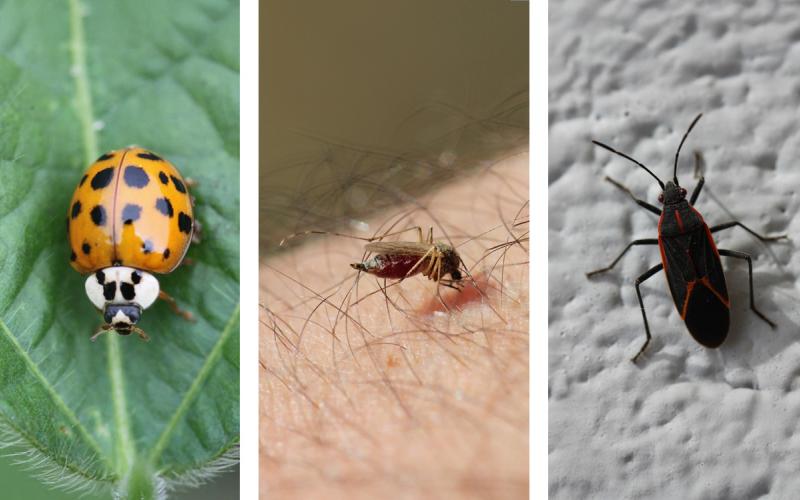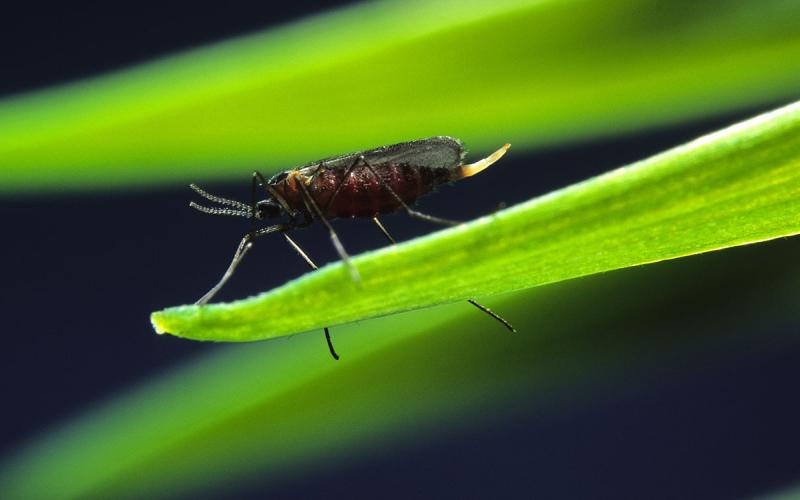Written collaboratively by Adam Varenhorst, Philip Rozeboom, Patrick Wagner, and Brad McManus.
Originally Submitted: June 12, 2023
While scouting alfalfa this week we observed true armyworm caterpillars that ranged from one-quarter inch to one-half inch in length. Every year, true armyworm caterpillars pose a threat to wheat fields, but they normally are observed at the end of June and early July. However, strong southerly winds are likely the cause for early observations of the caterpillars in 2023. Although true armyworms can feed on numerous crops, they are primarily an issue for corn and wheat. True armyworm caterpillars feed on leaves and can cause severe defoliation when large populations are present.
True armyworms are migratory pests that start each season in the southern United States; during their northward flight, true armyworm moths are more attracted to fields that contain living ground covers (for example, grass, weeds, and early season crops). For South Dakota, the moths generally arrive during June and July, but they were much earlier in 2023. Depending on the seasonal migration and their location in South Dakota, one or two generations of true armyworms are possible.
Identification
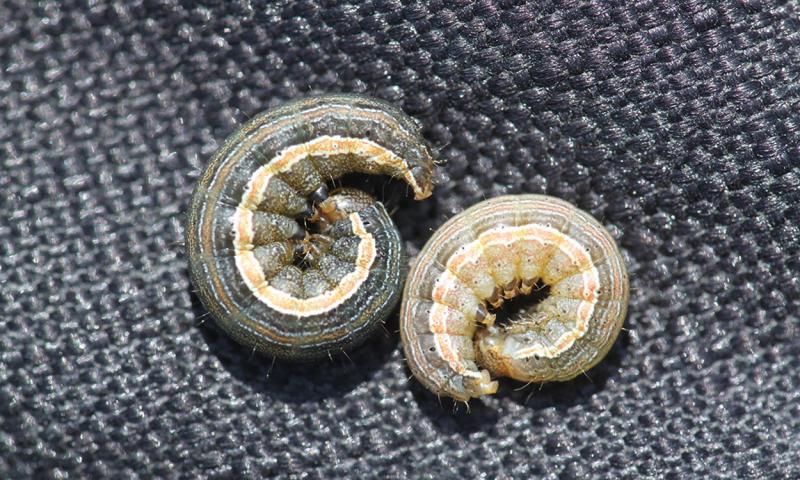
Caterpillars of the true armyworm can vary greatly in color from light brown to dark green, or sometimes almost black (Figure 1). Fortunately, there are some other characteristics that can be used reliably to identify them.
True armyworm caterpillars have an orange stripe on each side of their body that runs from their head to the end of their abdomen. In addition, true armyworm caterpillars will have dark bands on each of their abdominal prolegs (Figure 2).
The last characteristic is the network of black lines that are present on their orange head capsule (Figure 3).
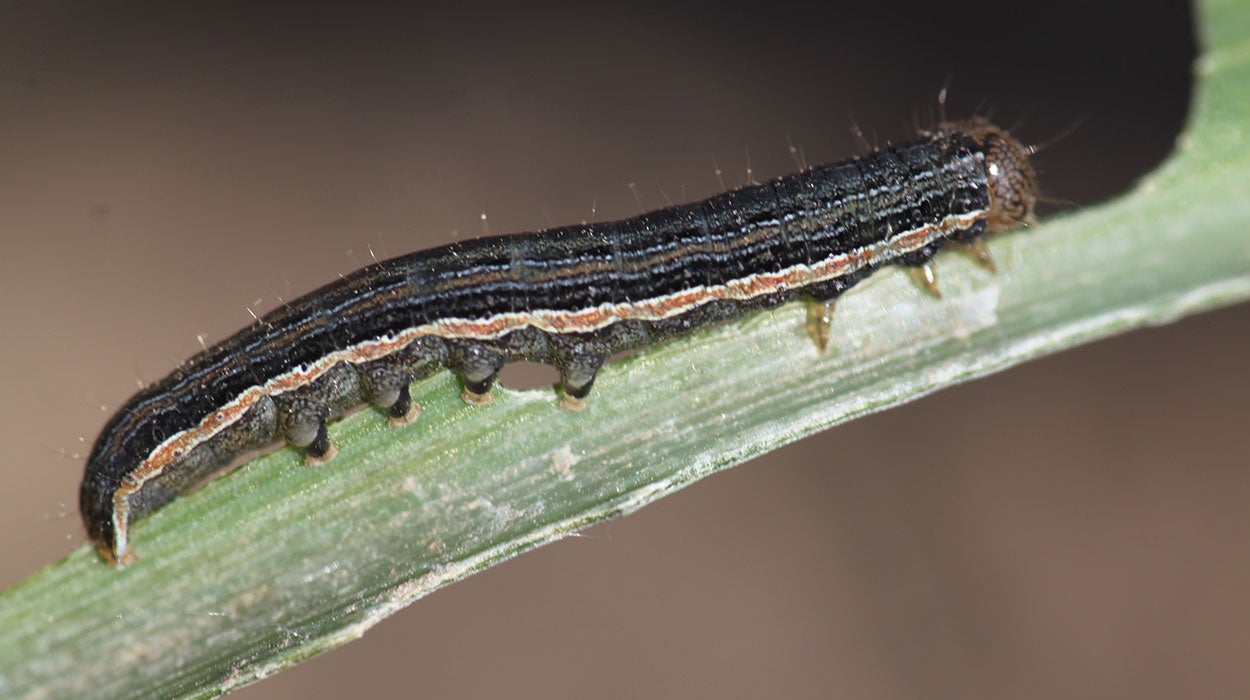
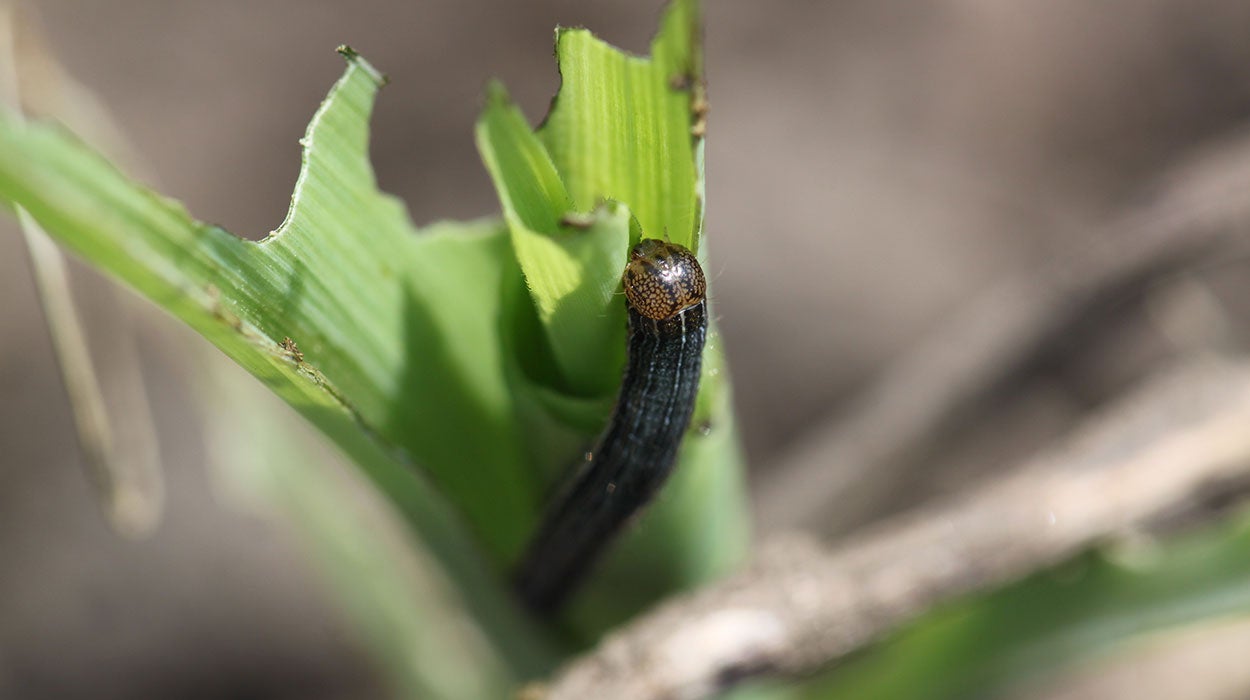
Scouting and Management
True armyworm caterpillars are generally not present at large enough populations to be noticed. However, they can be easily scouted for with either sweep net sampling or individual plant observations. When scouting, the entire field should be examined. If examining individual plants, the threshold is 2 caterpillars per square yard. Sometimes the caterpillars will be found at the base of the plant or on the soil near the plant. If scouting with a sweep net, the threshold is 40 caterpillars per 30 pendulum sweeps. Remember when using a sweep net to walk in a W or Z pattern through the field. Caterpillar feeding can reduce yields, especially if the flag leaf is removed prior to the soft dough stage.
If thresholds of true armyworms are exceeded, please refer to the latest South Dakota Pest Management Guide for Wheat.

